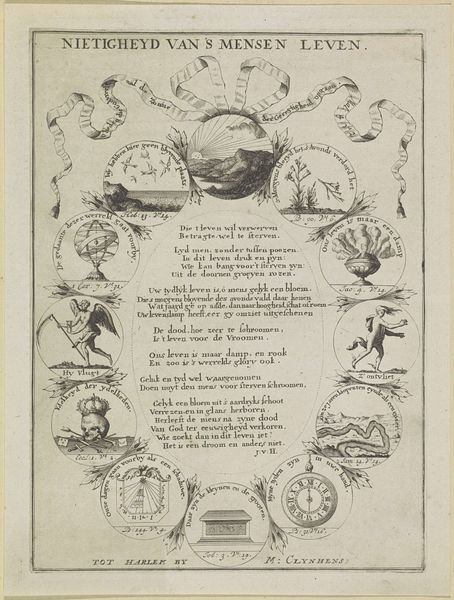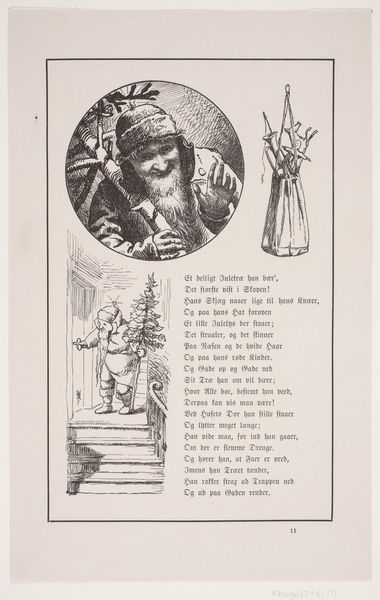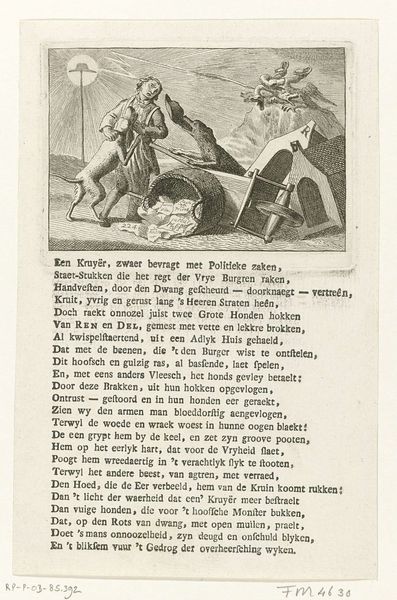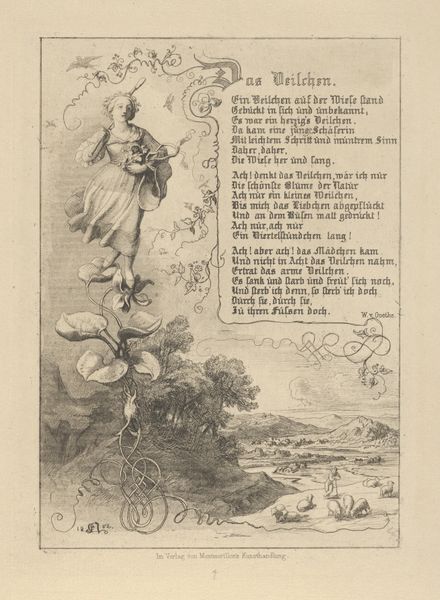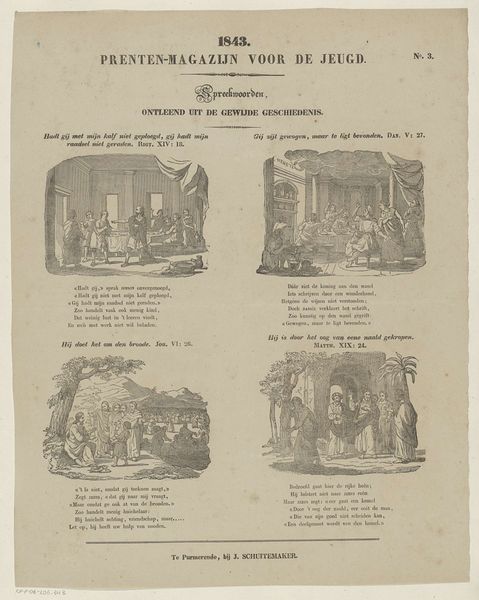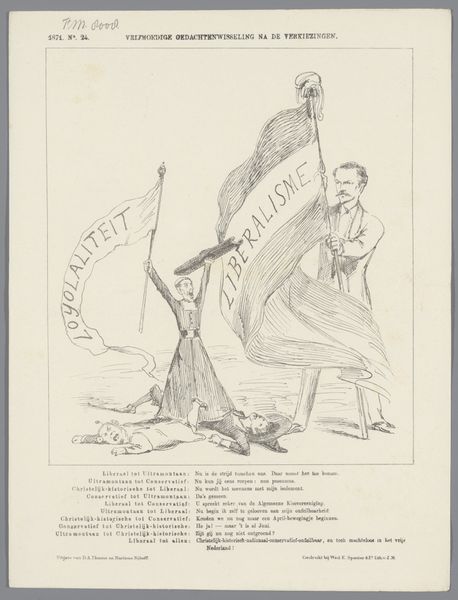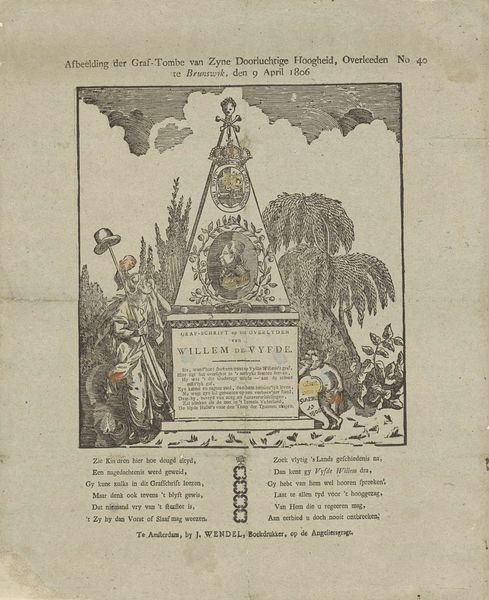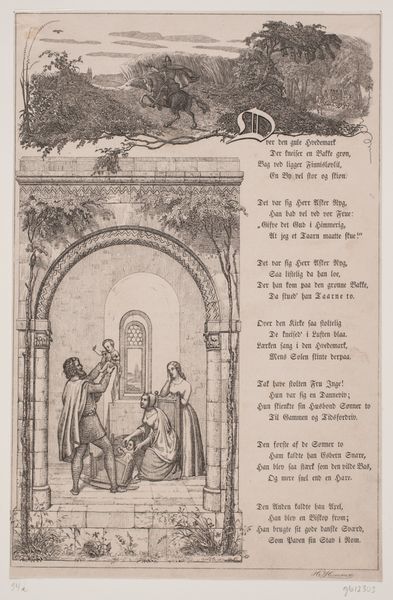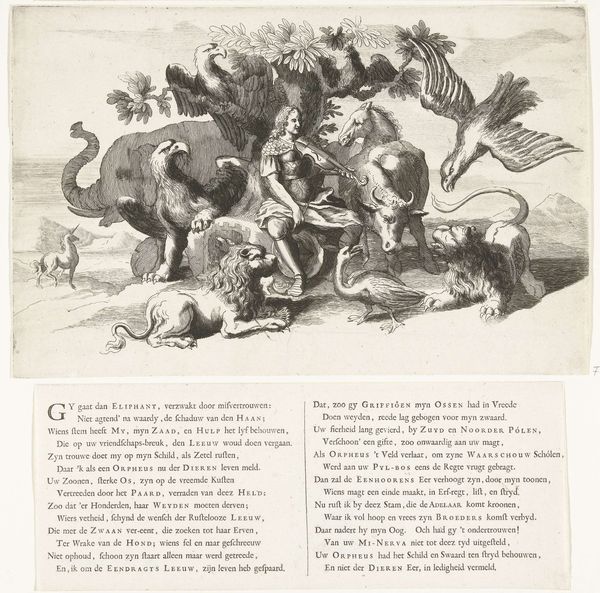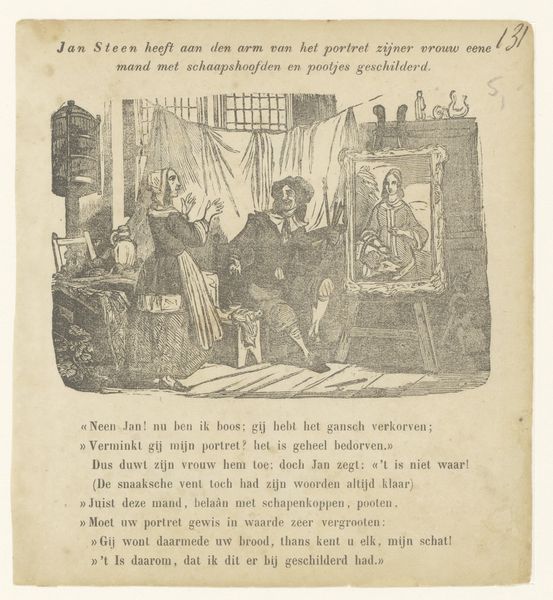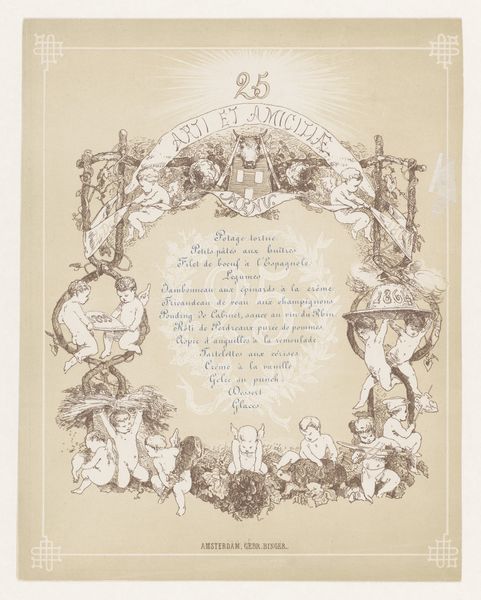
Herdenkingsprent ter nagedachtenis van de Slag bij Waterloo 1865
0:00
0:00
graphic-art, print, engraving
#
graphic-art
#
allegory
#
neoclassicism
# print
#
landscape
#
history-painting
#
engraving
Dimensions: height 558 mm, width 405 mm
Copyright: Rijks Museum: Open Domain
Curator: So, we’re looking at Carel Alphons Eckstein's "Herdenkingsprent ter nagedachtenis van de Slag bij Waterloo," an engraving from 1865, held here at the Rijksmuseum. The allegorical elements really jump out at me – the Dutch maiden, the lion, the martial imagery all within a Neoclassical framework. How does this strike you? Editor: It feels very... official. Very much a product of its time, with all the symbols of nationhood carefully arranged. What I'm curious about is, given that it’s commemorating a battle 50 years prior, what purpose would such a print have served? Curator: Exactly! That’s where considering the means of production and the intended audience becomes vital. This wasn’t high art meant for a salon; it's a print. Its reproducibility suggests it was intended for broader consumption. What social and political forces were at play in 1865 Netherlands that would make the remembrance of Waterloo important enough to produce and circulate such a print? Think about nation-building, shifts in political power... Editor: So, it's less about the specific artistic vision and more about what it *does*? Its function in shaping or reinforcing national identity at that moment? It served almost as propaganda? Curator: Precisely! Look closely at the idealized figures and symbolic objects. Consider them not just as aesthetic choices, but as tools, designed to cultivate specific emotions and ideals in the viewer. The material itself – the engraving – and its inherent ability to be reproduced, is key to its socio-political role. Do you think the quality of the engraving – its detail or lack thereof – contributes to this? Editor: Yes, I do. I suppose a less detailed engraving would have even more affordable, furthering the outreach of the print? The artistry almost becomes secondary to accessibility. I never thought about it that way before! Curator: And that's the core of a materialist approach. Art isn't created in a vacuum; it reflects and acts upon social and economic conditions. This piece isn't simply commemorating a battle; it's actively constructing a narrative of nationhood, facilitated by its material form and its mode of dissemination. Editor: This has definitely changed my perspective! I'll start considering production and the means through which art achieves not only visibility, but affordability. Curator: Wonderful! Remember, every artistic choice – from subject matter to medium – is laden with socio-political implications, and that materials themselves actively participate in that meaning-making process.
Comments
No comments
Be the first to comment and join the conversation on the ultimate creative platform.

